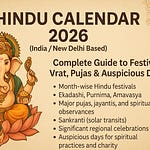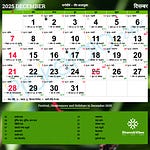Tiruchendur Murugan Temple, also known as Sri Subramaniya Swamy Temple, is one of the most revered temples dedicated to Lord Murugan (also known as Kartikeya or Subramaniya) in Tamil Nadu, India. It is one of the six abodes of Murugan (Arupadai Veedu) and holds immense significance in Tamil culture, mythology, and spirituality.
Unlike most Murugan temples located atop hills, Tiruchendur Temple is uniquely situated along the seashore, facing the Bay of Bengal, in the town of Tiruchendur, Thoothukudi District.
Historical Background
Ancient Origins: The temple's history dates back to ancient times, with references found in Tamil Sangam literature (~2nd century BCE to 2nd century CE).
Religious Significance: It is believed to be the exact site where Lord Murugan fought and defeated the demon Surapadman, a mythological event celebrated as Surasamharam.
Patronage: Over centuries, various Tamil dynasties, including the Pandya, Chera, Chola, and Vijayanagar rulers, contributed to its development.
Colonial Times: During the Dutch invasion in the 17th century, some idols were taken but were later recovered by devotees.
Architecture
Dravidian Style: The temple showcases classic Dravidian architecture with elaborate carvings, pillared halls, and towering gopurams (gateway towers).
Gopuram: The 9-tiered Rajagopuram, standing at about 137 feet high, is a notable landmark visible from the sea.
Sanctum Sanctorum: The main sanctum houses the deity Lord Murugan in a warrior posture, along with Valli and Deivanai, his consorts.
Valli Cave Temple (Valli Sunai): A nearby cave is associated with the legend of Murugan’s marriage to Valli.
Sacred Wells: Nazhikkinaru, a natural freshwater spring near the sea, is considered holy.
Religious Significance
Arupadai Veedu: Tiruchendur is the second of the six sacred abodes of Murugan.
Surasamharam Festival: Reenactment of the victory of Murugan over Surapadman, usually celebrated during Skanda Sashti with grandeur.
Pilgrimage Site: It attracts millions of pilgrims yearly, especially during Skanda Sashti, Panguni Uthiram, and Vaikasi Visakam festivals.
Festivals Celebrated
Skanda Sashti (Oct-Nov): The most significant festival with a dramatic re-enactment of Surasamharam.
Vaikasi Visakam (May-June): Celebrating Lord Murugan’s birthday.
Thai Poosam (Jan-Feb): Devotees carry kavadi as a penance.
Panguni Uthiram (March-April): Associated with divine marriages in Hindu mythology.
Rituals and Worship
Six Daily Pujas: Traditional Murugan worship is conducted six times a day.
Abhishekam: Ritual bathing of the deity with milk, sandalwood paste, and holy water.
Special Offerings: Devotees offer vels (sacred spears) and perform tonsuring as acts of devotion.
Travel and Visitor Information
Location: Tiruchendur, Thoothukudi District, Tamil Nadu, India.
How to Reach:
By Air: Nearest Airport – Tuticorin Airport (around 40 km), Madurai Airport (around 190 km).
By Train: Tiruchendur Railway Station connects with major towns.
By Road: Well-connected by buses from Madurai, Tirunelveli, and Thoothukudi.
Temple Timings: Usually open from 5:00 AM to 9:00 PM daily.
Dress Code: Traditional Indian attire is preferred. Men are usually expected to wear dhotis or pants with shirts removed in sanctum.
Unique Features
Seaside Setting: Very rare among major Hindu temples.
Non-Granite Construction: Unlike many South Indian temples, this temple is built largely with sandstone.
Legend of Recovery: Idols recovered from the Dutch who had stolen them, reinforcing the temple's mystical aura.
Divine Water: Nazhikkinaru spring water is considered miraculous and medicinal.
Spiritual Essence
Tiruchendur offers a powerful spiritual atmosphere with the sounds of waves blending with temple bells, rituals steeped in ancient tradition, and a serene environment that invites deep devotion and reflection on Murugan's virtues – valor, wisdom, and compassion.
Would you also like me to create a travel guide (with accommodation suggestions, best visiting times, local food, and things to do) for Tiruchendur? 🚩
Or a beautiful poster or infocard summarizing this for your use? 🌟
4o
You said:
write a comprehensive article with details , its history, details, foundation, origin, its timeline, its importance, religious imporance, devotee , rituals, puja, aarti, bhajan, timinig, visit, things to do, nearby, travel and more
ChatGPT said:
Of course! Here’s a deeply detailed and comprehensive article on the Tiruchendur Murugan Temple — rich with history, culture, religious essence, and practical guidance:
Tiruchendur Murugan Temple: A Complete and Detailed Guide
Introduction
The Tiruchendur Murugan Temple, officially known as Sri Subramaniya Swamy Temple, stands majestically by the shores of the Bay of Bengal in Tamil Nadu, India. Revered as one of the six sacred abodes (Arupadai Veedu) of Lord Murugan, this temple embodies profound spirituality, heroism, and devotion. Unlike most Murugan temples perched atop hills, Tiruchendur is uniquely situated on flat land by the sea, making it an exceptional spiritual destination.
Foundation and Origin
Mythological Origin:
According to Hindu mythology, this is the battlefield where Lord Murugan defeated the demon Surapadman after a ferocious battle, liberating the world from his tyranny. Following his victory, Murugan, also known as Subramaniya, worshipped Lord Shiva at this site to express gratitude.Historical Foundation:
Historical evidence indicates that the temple has been in existence since the Sangam period (2nd century BCE - 2nd century CE). Ancient Tamil literature like Thirumurugatruppadai by Nakkeerar mentions this temple, highlighting its antiquity and religious prominence.Architectural Beginnings:
Initially, the temple was built of sand and clay, but over time, with successive dynasties like the Pandya, Chera, Chola, and Vijayanagar kings, it was fortified with granite and sandstone, while still retaining elements of its early spiritual essence.
Timeline and Major Events
PeriodEvent/Development2nd century BCEMention in Sangam literature7th century CEPraised in hymns by Saint Arunagirinathar16th-17th century CERenovations during the Nayak reign1646 CEDutch pirates stole the main deity’s idol but returned it due to miraclesModern EraContinual restorations, expanded pilgrim facilities
Architectural and Structural Details
Style: Dravidian architecture
Materials: Primarily sandstone (rare for temples)
Notable Structures:
Rajagopuram (Main Tower): 137 feet tall with 9 tiers.
Sanctum Sanctorum: Houses Lord Murugan along with Valli and Deivanai.
Nazhikkinaru: A freshwater spring near the seashore, considered sacred.
Shanmuga Vilasa Mandapam: Hall with artistic pillars.
Valli Cave Temple: Associated with Murugan’s divine marriage to Valli.
Religious Importance
Second Abode: Tiruchendur is considered the second of Lord Murugan’s six most sacred abodes (Arupadai Veedu).
Victory Over Evil: Symbolizes triumph of good over evil (Surasamharam).
Spiritual Purification: Pilgrimage to Tiruchendur is believed to cleanse sins and bestow divine blessings.
Devotees and Faith
Millions of devotees, not only from Tamil Nadu but across India and Southeast Asia (especially Malaysia and Singapore), visit Tiruchendur with unwavering faith. Many fulfill vows by carrying Kavadi, performing tonsure, and offering special Vel (divine spear) to the deity.
Rituals, Puja, Aarti, and Bhajans
Daily Rituals:
Ushat Kalam: 5:00 AM
Kalasanthi: 8:00 AM
Uchikalam: 12:00 Noon
Sayarakshai: 5:00 PM
Irandam Kalam: 7:00 PM
Arthajama Pooja: 8:30 PM
Aarti:
Performed six times a day during the pujas.
Accompanied by Nadaswaram (traditional temple music) and Vedic chanting.
Bhajans and Devotional Songs:
Regular recitations of Thiruppugazh hymns by Arunagirinathar.
Devotional singing during festivals, often focusing on Murugan's valor and compassion.
Major Festivals
Skanda Sashti:
Most significant, celebrating Murugan’s victory over Surapadman through a dramatic live enactment of the battle (Surasamharam).Vaikasi Visakam:
Celebrating Murugan’s divine birth.Thai Poosam:
Kavadi processions and penance rituals.Panguni Uthiram:
Grand divine marriage ceremony of Murugan with Valli and Deivanai.
Temple Timings for Visitors
Morning Opening: 5:00 AM
Night Closing: 9:00 PM
Special Days/Festivals: Extended hours till late night.
Things to Do at Tiruchendur
Darshan: Have a soulful darshan of Lord Murugan in his heroic form.
Holy Bath: Take a ritualistic bath at Nazhikkinaru and the sea.
Participate in Pujas: Attend special pujas and aartis.
Offer Kavadi: Fulfill vows and seek blessings.
Valli Cave Visit: Explore the mystical cave associated with Valli's penance.
Nearby Attractions
Valli Cave Temple: An ancient cave connected to Murugan's marriage story.
Manapad: A coastal village known for Christian pilgrimages (close to Tiruchendur).
Panchalankurichi Fort: Associated with freedom fighter Veerapandiya Kattabomman.
Kayalpatnam: A culturally rich Muslim town with beautiful mosques.
Thoothukudi (Tuticorin): Famous for the beach, harbor, and pearls.
Travel Information
By Air:
Nearest Airport: Tuticorin Airport (40 km away).
Alternatively, Madurai International Airport (190 km).
By Train:
Tiruchendur Railway Station is well connected to Tirunelveli, Chennai, and other cities.
By Road:
Excellent bus services from Chennai, Madurai, Tirunelveli, Kanyakumari, and Thoothukudi.
Local Transport:
Auto-rickshaws, taxis, and buses are easily available.
Accommodations
Temple Cottages: Available at reasonable rates for pilgrims.
Hotels: Ranges from budget lodges to mid-range hotels in Tiruchendur town.
Beach Resorts: A few options available for a relaxed stay near the beach.
Spiritual Tips for Visitors
Best Time to Visit: October to March (pleasant climate and Skanda Sashti celebrations).
Dress Code: Traditional attire (men: dhoti, women: saree/salwar).
Respect Rituals: Be mindful of temple customs and sacred spaces.
Participate: Engage in singing bhajans or offering seva if possible.
The Tiruchendur Murugan Temple is not just a religious site but a profound spiritual experience. Whether it’s the ancient chants resonating through stone halls, the soothing sea breeze blending with the aroma of incense, or the overwhelming energy during Skanda Sashti, every aspect of this temple nurtures deep devotion.
Visiting Tiruchendur is a journey of faith, history, culture, and inner transformation — a destination where divinity meets the ocean.










